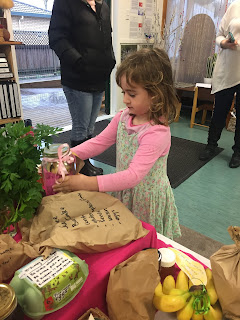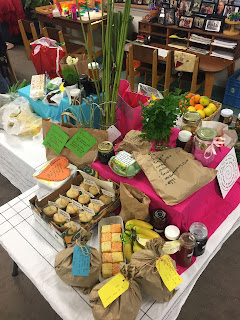Much of last term we started looking at the book ‘In my heart – a book of feelings’ by Jo Wilek. This is a beautiful book and a wonderful way in which to explore emotions and feelings with children. The book tells the story of a little girl whose heart experiences many different emotions, and tells us:
Sometimes my heart feels like a big yellow star, shiny and bright.
I smile from ear to ear and twirl around so fast,
I feel as if I could take off into the sky.
This is when my heart is happy.
I smile from ear to ear and twirl around so fast,
I feel as if I could take off into the sky.
This is when my heart is happy.
Happiness, sadness, bravery, anger, shyness are all emotions the girl in the story explores because…our hearts can feel so many feelings! Some make us feel as light as a balloon, others as heavy as an elephant.
When we first began to explore this book, we talked about the range of emotions this girl was feeling, how they physically affected her, and how her heart responded to each one. No doubt, because of the thoughtful yet direct words alongside the illustrations in this book – all the children at Mairtown could easily relate to this girl and started to share some of the ways their hearts have felt happy, sad, silly, angry and so on.
Exploring the different emotions that we all at some point feel, is an interesting topic to work on with children. For instance all of us at times feel angry or frustrated, sometimes we may feel shy or at times sad, and I believe it’s important for children to know that these emotions are normal; this is what it means to be human, it is how we deal with these emotions that is important for us.
Using this book as a provocation lead to many interesting conversations with the children. As I often do, I also invited the children to explore this topic of emotions using the language of art. Many drew hearts and narrated their words to me, whilst others drew moments in time that had made their hearts feel a particular way.
Talking about our emotions is a topic many early childhood centres often engage in, as early childhood is when children begin developing their social and emotional skills, which leads onto influencing their mental health and well-being, both now and in the future (Kidsmatter)
Children learn the meaning of emotions; what they feel like, what can cause them, how to understand and express these feelings and how to analyse social situations, all through the important relationships in their life's including their whānau and caregivers, family friends, their peers and their early childhood teachers.
In these early days at kindergarten, we explored the book as well as exploring our own emotions. The book certainly acted as a positive role model to support the children’s understandings and use of emotional language. As we worked in small groups sharing experiences and emotions that made our hearts feel a certain way, I could see how this work was providing a safe way in which the children were able to look more carefully at some of their own emotions; at what they have felt, of what they are feeling now, or of how certain things have made them feel in the past. Naturally, as we all shared some of these emotions, we talked amongst ourselves about ways in which we can handle and manage more emotionally difficult situations. For many of our children some of these more difficult situations are big challenges for them; feeling of sadness as they say goodbye to mum or dad in the morning or dealing with a friend leaving for school, feelings of frustration when they can’t quite succeed in a task yet such as swinging yourself or getting across the monkey bars, or feelings of excitement when playing a favourite game or thinking about your upcoming birthday.
Here are some of the ‘heartful’ emotions that our children were able to recognise and identify.
Senushi: My heart can feel helpful, like today I helped you and I help my sister tidy up the playroom and it made her heart happy.
Max: Once my heart was scared when I saw a really scary crocodile and when I think about ghosts.
Ezra: Max that would make my heart feel scared too. When things creep outside and go boo at night time, that makes my heart feel scared.
Taikura: My heart doesn’t feel scared at night time, it just feels tired.
Kaia: When I go to bed my heart feels calm as mumma reads me a story on the couch.
Ezra: When my daddy tickles me I laugh and that always makes my heart feel giggly.
Charlize: When I was at home my heart felt angry because mummy growled at me, cause I growled at her first! Then afterwards my heart felt happy when we were friends again.
Riley: My heart can feel proud, like when I go up Parihaka cause its hard.
Lilly: I have had an excited heart. Trips make me excited, like the dairy, like Lucas’s school. And Christmas and having a sleep over.
McKenzie: I have drawn my happy joyful heart. My little sister makes me feel happy cause she plays with me lots. Hers be the mummy and I’m the little baby.
Olivia: Mine is a love happy heart and it has a rainbow inside. It makes you happy when you love things. I love mummy, daddy, Sienna, my cat and my guinea pigs.
Charlize: I haven’t had a broken heart, but I know you can have them.
Max: Yes, its gets broken when you say bad bad words. That’s why teachers are teachers.
For most of us, including many adults, it can take years to learn to recognise the feelings we have inside our bodies, and of course how to react to these – either with good emotions or less positive ones. I know that even as an adult, I can feel new emotions at times and have to figure out how to safely cope with these feelings and how to express them. Emotional competency often matures with age, but even at the young age of 3, 4 and 5, it is very important to start dealing with feelings in a positive way by discussing what an emotion is, how you feel at moments in time, and how to handle those in a positive way for the rest of our lives.
By valuing your children’s emotions, you are teaching them that their feelings matter (C. Cox)
As we worked on the feelings our hearts encountered as well as our art work to represent some of these emotions, there were three key points we all reflected on when sharing our stories. Working together we all helped, when needed, to identify the feeling someone may have felt; were they, for instance, happy, sad, mad or excited? We talked and tried to explain this emotion to others, so they could put themselves in our shoes, and understand what that was like and that there is no right or wrong way to feel during a situation. For example, ‘If I am happy I feel like smiling, when I am excited I like to spin and dance’. And finally we looked at how to express these feelings from our hearts. When feeling mad, we can run outside on the grass to get rid of some of the energy we have, or we can take deep breaths to help calm us down.
‘Studies have shown that having a high emotional quotient – that is being able to understand one’s own feelings and the feelings of others and having self-control and being able to control one’s own emotions – is an important component of success in life’ (Lee, 2017)
Naturally over time our work moved on from the feelings our hearts can experience to thinking about one particular characteristic – that of kindness. This happened as children talked about gestures their friends had done that were kind, and made their hearts feel happy. Alongside that we also introduced the children to the interactive book ‘Oat the Goat’ (an initiative launched by the Ministry of Education – see here) which highlights the importance of being kind to one another.
The children continued to draw different pictures expressing emotions, and moved onto drawing some stunning heart pictures as we explored the question ‘What does it mean to be kind?’.
Kindness is a simple eight letter word that has the extraordinary power to make the world a better place (source unknown)
As we worked we shared our views on kindness, and as a teacher I believe it is important to practice what I teach by inspiring the children to share their kindnesses with one another and to spread kindness wherever they go.
At Mairtown all the teachers show kindness by listening to everyone, by being friendly, supportive and encouraging, by being sensitive to the needs of others, by role modelling respect and trust and by nurturing positive interactions with the children. Kindness has certainly been spreading throughout our environment, children are gifting pictures to one another, taking the time to recognise when someone is in need of a friend, pushing someone on the swing, helping someone who is hurt – there are so many beautiful acts of kindness it would be hard to list them all.
Here are our children’s views on kindness and what it means to them:
Max: Kindness means to be loving and caring.
Awhina: And to be sharing.
Adeline: And pushing (on the swing).
Senushi: Being friends is being kind
Awhina: And talking, you can talk with kindness, we can say please, like ‘please can I have the paint’.
Max: And saying ‘Are you all right?’, it means using good words as kindness.
Freya: Kindness is to say ‘Come and play with me?’, that’ll make them have happy hearts.
Amelia C: And you have to listen to people.
Thorfinn: You can say sorry too, like don’t throw sand and if you do you can say sorry.
McKenzie: And if you see someone sad we be their friends, and if they don’t have any stuff at kindy we can show them where it is.
‘Kindness in words creates confidence. Kindness in thinking creates profoundness. Kindness in giving creates love’ Lao Tzu
Hei konā mai,
Christine


























































































